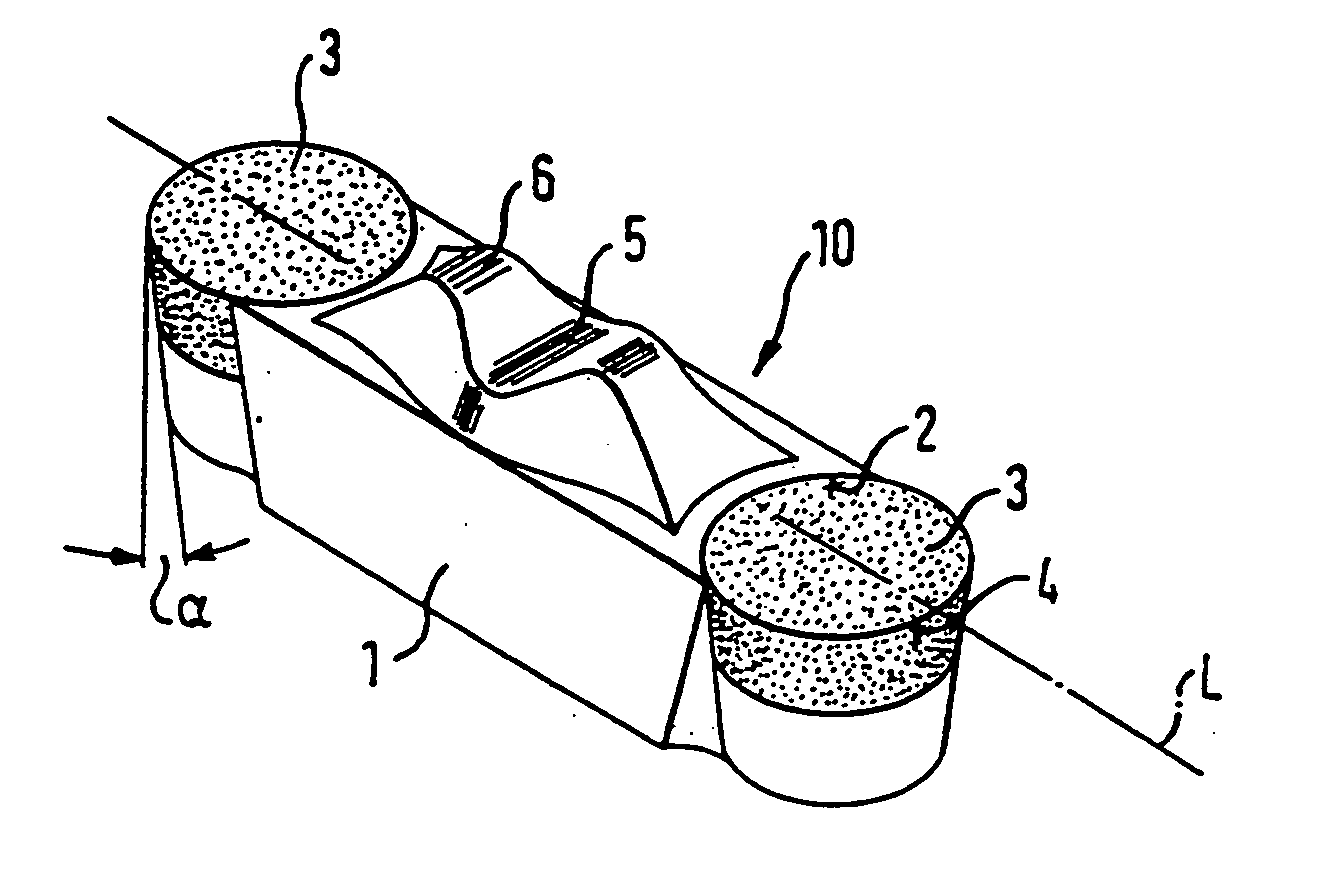Cutting insert and use thereof, and a cutting insert especially for turning aluminum
- Summary
- Abstract
- Description
- Claims
- Application Information
AI Technical Summary
Benefits of technology
Problems solved by technology
Method used
Image
Examples
Embodiment Construction
[0025] The cutting insert 10 comprises a base body 1 made of cemented carbide (cobalt-bound tungsten carbide), the cutting insert being designed as an indexable insert having a pair of ceramic cutting bodies 3.
[0026] The two ceramic cutting bodies 3 have the shape of a perpendicular circular truncated cone and are bonded into preformed recesses 2 of the base body 1 by means of a high-temperature adhesive in such a way that the smaller base surface of the circular truncated cone is bonded firmly to the bottom 7 of the recess and a part of the conical shell surface of the circular truncated cone to the conical wall surface congruent therewith of the recess 2. A cutting edge 4 is formed on the exposed circular arc of the larger base surface of the circular truncated cone of each of the two ceramic cutting bodies 3. The exposed partial circle, i.e., not extending within the recess 2, of the larger base surface of the circular truncated cone comprises at least 200.degree., but not more t...
PUM
| Property | Measurement | Unit |
|---|---|---|
| Angle | aaaaa | aaaaa |
| Angle | aaaaa | aaaaa |
| Angle | aaaaa | aaaaa |
Abstract
Description
Claims
Application Information
 Login to View More
Login to View More - R&D
- Intellectual Property
- Life Sciences
- Materials
- Tech Scout
- Unparalleled Data Quality
- Higher Quality Content
- 60% Fewer Hallucinations
Browse by: Latest US Patents, China's latest patents, Technical Efficacy Thesaurus, Application Domain, Technology Topic, Popular Technical Reports.
© 2025 PatSnap. All rights reserved.Legal|Privacy policy|Modern Slavery Act Transparency Statement|Sitemap|About US| Contact US: help@patsnap.com


